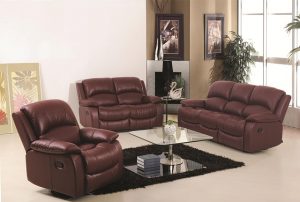Living Areas
Lounge Rooms, Dining Rooms, Bedrooms, Study’s
Required: General dusting and polishing of furniture (within reach)
Dusting of skirting boards, windowsills, picture frames and rails,
and door frames and mouldings (on a rotational basis)
Dust the ornaments, replacing them in the exact same position and angle
Dust all lampshades; polish the front of the TV and cabinet
Polish glass tabletops and glass windows in cabinet doors
Polish mirror wardrobes and dust or vacuum the track they run on
Clean the telephone handset
Wipe dirty marks off walls around light switches
Wipe leather lounges or vacuum cloth lounges, also under cushions
Shake scatter rugs (outside)
Vacuuming throughout, or sweeping and mopping
Change the sheets and make the bed (when required)
Bedrooms
Most clients – when they have teenage children – will request that only the main bedroom be cleaned. However, sometimes you will have to do all bedrooms through the house. The most important bedroom is obviously the one where your client sleeps, so you need to spend time looking around the room from positions where he, she or they have time to notice your cleaning. They do this from:
- Lying on the bed – they look at the ceiling, the light and the ceiling fan.
- They also look under the inside of the shade on the bedside table lamps.
So even if you don’t get time to check every ceiling in the house, make sure you check the bedrooms!
Bedside tables (when you think about it) are probably the most looked-at pieces of furniture in the home. So, make sure the table itself, the clock and ornaments on them are spotless. Lamps need to be cobweb free, as you can see them quite obviously lying down. Material shades can be dusted with a clean dry cloth or vacuumed with the soft brush attachment.
The Bed is the other thing noticed. It takes only a minute to fluff up the pillows and straighten the doona cover, and suddenly the room looks great! When changing the sheets and re-making the bed aim to re-make it the same way it was made – every client makes a bed differently. If you don’t know how to do ‘Hospital Corners’ when tucking in the sheets, ask during your training workshop. Also, remember to do the bed head when dusting.
Clothes lying about are the hardest things to deal with – check whether they are clean or dirty first, then fold the clean clothes neatly and put them away, and place any that are dirty into the washing basket. Often you cannot tell the difference, so just fold those clothes as neatly as possible.
Dust is the other thing that concerns people in the bedroom as many people are asthmatic. Check whether or not your clients or their children do have asthma, and if so take special care of the dusting. Use a damp cloth to pick up as much dust as possible, and clean behind the bed and bedside tables regularly.
Cupboards need to be cleaned free of marks, and check inside the doors for any mirrors that need to be cleaned. With mirror robes, slide the door open and vacuum along the floor just inside, as well as the tracks that the doors run on. Wipe off any marks around the door handles.
Tips for lifting safely
Don’t lift if you have to: Look where you are going:
- use a trolley or other equipment * think ahead
- lighten the load * clear a path
- reduce the distance * point your foot in the direction you are going
Lifting Safely
Get close to the load and get a good grip.
Bend hips and knees, straighten your back,
and face forwards. Put your feet shoulder-width
apart and use your thighs to push up.
